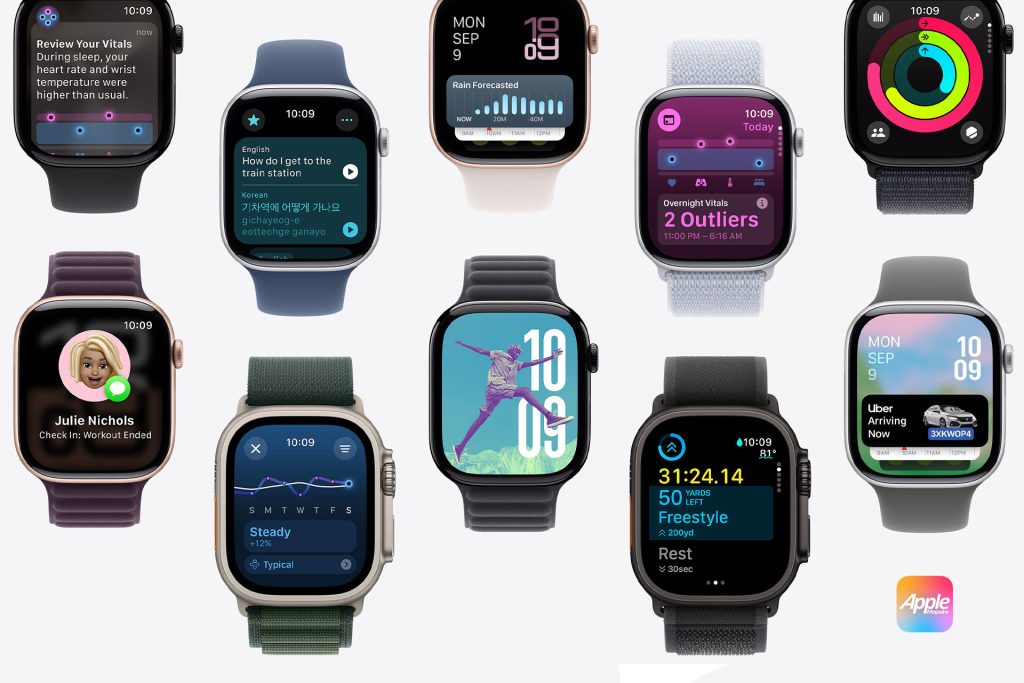Apple’s efficient display technology has already impressed users through its application in the Apple Watch Series 10. The display’s ability to dynamically adjust refresh rates based on usage is a significant leap in energy conservation. Now, reports suggest that Apple is planning to integrate this display tech into the iPhone lineup, starting as early as 2025. This would bring substantial improvements to the iPhone’s power efficiency, enhancing both battery life and performance.
What Makes Apple’s Display Technology Efficient?
The Apple Watch’s efficient display technology centers around the use of low-temperature polycrystalline oxide (LTPO) technology. This LTPO display can adjust its refresh rate depending on the task at hand. For example, the screen can slow down to as little as 1Hz when static, such as when the screen is idle or displaying a still image, and ramp up to 120Hz during active use, like scrolling or gaming. This ability to modulate refresh rates ensures that energy is used efficiently, prolonging battery life without sacrificing display quality.
With future iPhones poised to adopt this technology, users can expect smoother scrolling, more responsive interactions, and longer battery life. Given how critical battery optimization has become in smartphones, this advancement could dramatically enhance the iPhone’s daily usability.
ProMotion and Dynamic Refresh Rates
ProMotion, Apple’s signature feature that offers dynamic refresh rates up to 120Hz, has already appeared in iPad Pro models and iPhone Pro versions. However, by bringing Apple’s efficient display technology to all iPhones, even the standard models could benefit from this feature, which adjusts refresh rates based on the activity. Whether it’s reading an article at a 10Hz refresh rate or gaming at 120Hz, users would experience seamless transitions with reduced battery drain.
The integration of this tech aligns with Apple’s broader goal of optimizing performance across devices while maintaining energy efficiency. With the growing demands of apps, multitasking, and augmented reality, having a display that can adjust its performance as needed is a significant step forward.
Why Future iPhones Need This Technology
As iPhones continue to become more powerful, display technology must evolve to keep up with user expectations and power demands. Apple’s efficient display technology will not only improve power management but also provide a superior viewing experience with better color accuracy, brightness, and smoothness. Here’s why future iPhones need this technology:
- Improved Battery Life: By reducing power consumption during idle times, this tech can prolong battery life, which is a critical concern for most smartphone users.
- Seamless Performance: Adaptive refresh rates ensure that tasks like scrolling and gaming are smooth, with no visual stuttering or delays.
- Enhanced Durability: The LTPO technology reduces the risk of burn-in, ensuring the display’s longevity even with constant usage.
Challenges in Bringing Apple Watch Tech to iPhones
While the benefits are clear, bringing the Apple Watch’s efficient display technology to iPhones comes with challenges. Currently, producing LTPO panels at scale is more expensive than traditional OLED displays. Apple will need to refine its manufacturing process to make this cost-effective for the larger screens of iPhones. Additionally, scaling the adaptive refresh rate to work seamlessly on bigger displays without compromising quality or battery life requires further optimization.
However, Apple’s track record of overcoming production and technological challenges suggests that it is only a matter of time before this innovation is made accessible across its entire iPhone lineup.
The Potential Impact on User Experience
For users, the transition to Apple’s efficient display technology could significantly improve everyday interactions with their iPhones. Whether it’s gaming, video streaming, or just navigating through apps, the display would respond more fluidly while using less power. This balance between performance and efficiency will ensure that users no longer have to choose between optimal performance and long battery life.
Moreover, for content creators, graphic designers, and even casual users who demand visual accuracy, this display technology would offer sharper images and more precise colors, enhancing creative workflows and media consumption on iPhones.
The introduction of Apple Watch’s efficient display technology into iPhones marks the beginning of a new era for smartphone displays. This technology, which balances high performance with energy efficiency, could revolutionize the way users experience their devices, making the iPhone not just a powerful tool but also one that lasts longer on a single charge.
As Apple continues to refine its technology and expand its display innovation, consumers can look forward to future iPhones that offer unparalleled display quality, seamless performance, and extended battery life—all powered by the same efficient display technology that has already transformed the Apple Watch Series 10.
Check back to AppleMagazine soon for more.
